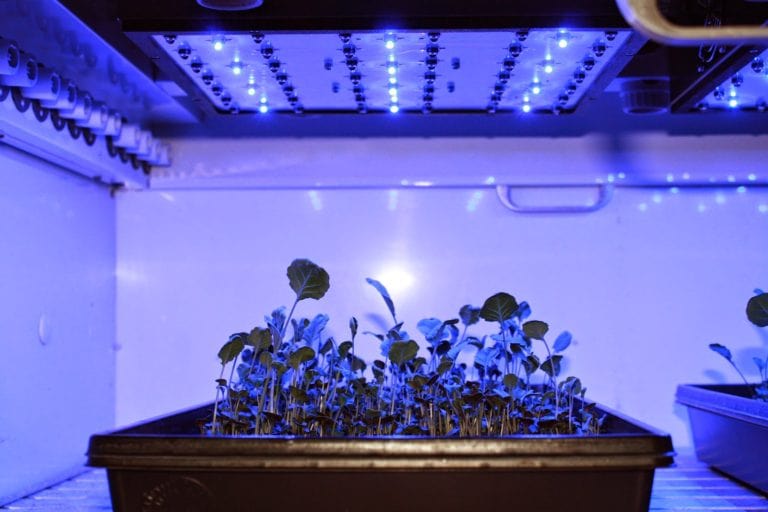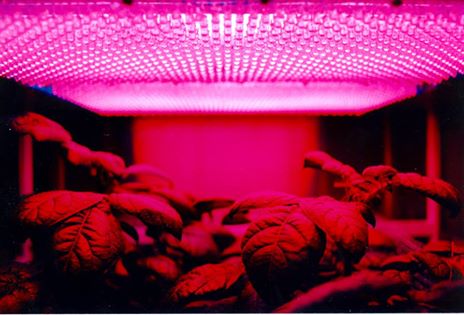We've talked about the light spectrum before, but we want to get into the specifics behind the light spectrum: wavelengths.
Wavelengths are what we use to measure a wave along the electromagnetic spectrum, and they can be longer waves like radio waves or shorter like gamma rays. But no matter if it's x-ray's for your bones or TV waves you get from satellites, wavelengths are what you need to manipulate to get the results you want.
Thankfully the spectrum we're referring to is the light spectrum, which- in the grand scheme of things- is relatively small. Even better, when it comes to growing plants there are only four wavelengths of light we consider: blue (cool, 400-520nm), green (neutral, 500-600nm), red (warm, 630-660nm), and beyond red (hot, 720-740nm). These wavelengths are vital when it comes to growing plants because they will allow a plant to process light and sugars properly, as well as encourage your plants to grow and protect itself in various ways.
Does that seem a little overwhelming? Don't worry, it was for us at first, too.
Violet and Blue Wavelengths
Ah, the cool wavelengths of light. These include UV (200-380nm), Violet (380-445nm), and Blue (450-495nm). These wavelengths are responsible for developing the structure and health of the plant, so you must try to expose your plant to as many of these wavelengths as possible during its life- in moderation, of course.

Overexposure to UV rays can be harmful to us and plants alike, but that doesn’t mean it’s completely terrible for them. In fact, when your skin gets darker your body starts to develop cells to help protect you from that exposure- that’s a tan. For plants, they create resins to help absorb and protect themselves from the damaging effects of UV rays- those resins are usually what lots of growers want. Overkill of those rays can severely damage your plants, and that’s why you usually don’t see lights with them because it’s tricky to manipulate that wavelength without harming your plant. When they are implemented, they're usually low strength.
Studies show that violet wavelengths are responsible for strengthening plant cells against sun/light damage. Along with antioxidant enhancement, this wavelength helps the plant’s attractive features like the color and scent. It should be noted that violet is its own wavelength, and should not be confused with the purple/violet you get when you mix blue and red wavelengths.
Blue wavelengths are vital in the development and processing of chlorophylls and carotenoids. As you probably already know, chlorophyll's play an important role in turning light and nutrients into chemical energy for your plant to grow. Carotenoid's help capture light and get rid of some of the excess energy from that light. In this wavelength, all of this development is heightened, which is why you use so much expansive growth with this wavelength.
Red and Far Red Wavelengths
The red wavelengths of light are considered the warm wavelengths along the light spectrum. This includes the red (630-660nm) wavelength and far red (720-740, IR) wavelength. Cool wavelengths and warm wavelengths contribute chlorophyll processing, but warm wavelengths aren't as intense as cooler ones. That's why you don't see so much explosive growth with flowering lights. What you do see, though, is gradual growth that will contribute to the strengthening of stems, the growth of leaves, and eventually vegetation and fruit.

The red wavelength is most abundant during the summer and autumn parts of the year, which is usually why you use it during the flowering stage of growth: that's what they'll flower with naturally. When these wavelengths stimulate your plant more intensely and for longer periods than in vegging, it will trigger your plant to activate cells to specifically start producing flowers. Because your plants need more strength at this time of year to grow its harvest, this wavelength is also responsible for helping strengthen stems to hold the fruit it'll produce.
Going into the far red wavelengths, this spectrum is like the red wavelength but stronger. This wavelength will usually stimulate your plant to make leaves bigger. Studies have also shown that plants exposed to minimal amounts of far red need less time to flower than plants without far red wavelengths. But just like UV rays, these rays can be damaging to your plants if they're overexposed to them, so if you're going to use IR in your garden make sure you know its strength.
Green/Yellow Wavelengths
The green/yellow spectrum of light (500-600nm) is often underestimated. While it’s true they don’t make as huge of an impact on your plants, the role wavelengths play is nonetheless vital to the growth of your plant.

Yes, plants reflect the color green, but that doesn’t mean they’re not absorbing it as well. One important thing that happens when green/yellow wavelengths are absorbed is that they help your plant survive in unfavorable conditions. Green wavelengths can penetrate foliage and can provide energy to plants grown in shady areas. That means that while your plants up top are receiving all of the light they need, the shaded plant growth can be stimulated.
It’s thought that though there’s not much germination going on in low light, the seeds and plants that are grown in there will have a better chance at growing in lower lit areas. But does that mean you should run out and grab some green lights? Not necessarily.
While green/yellow wavelengths are helpful, they’re not necessary. Studies show that while plants grown under green light are slightly bigger than those grown under all blue lights, red lights tend to outgrow plants with all green spectrums. Some studies have seen plants suffer under all green lights, so if you’re going to use green wavelengths be sure their strength isn’t too high.
So the next time you go looking for a bulb or you’re looking over the spectrum charts of an LED, check where the light’s wavelengths fall on the spectrum. And don’t be afraid to get a light with some green spectrum in it- you never know how it can benefit your plant.


4 comments
Devin Martinez
“Hello!
Great Question.
For anything higher than 900w you would want to have the lights 26-42” away from plants. For more information check out our post on <a href=""https://growace.com/blog/how-high-should-your-grow-lights-be-above-your-plants/"" rel=""noopener"" target=""_blank"">How High Should Your Grow Lights Be Above Your Plants?."
Rwanda
How low should I hang a 2000 watt grow philzon light in a 3*3 tent need help
Devin Martinez
It’s our pleasure! Wavelengths are very important to understand in the grow room. No matter what you’re growing, knowing about wavelengths of light will help you know which sort of grow light is best for each stage of growth. For example, if you’re in your vegging stage you’ll want more of a cool blue wavelength to stimulate growth of leaves and branches, so you’d want to go with either an MH light bulb or an all blue LED grow light. In the flowering stage you’d want something in the warm red wavelengths to stimulate flower growth so you’d want either an HPS grow light, an all red LED grow light, or an LED grow light with a mixed blend of spectrums. For a more even blend, you might even want to consider going with a COB (Chip On Board) LED grow light or a CMH grow light (by “even” we mean the spectrum is within the range that covers cool and warm spectrums all in one light)
James
“Nice post
Complete and clear information, now I understand much more about Wavelengths.
Thanks for sharing!”